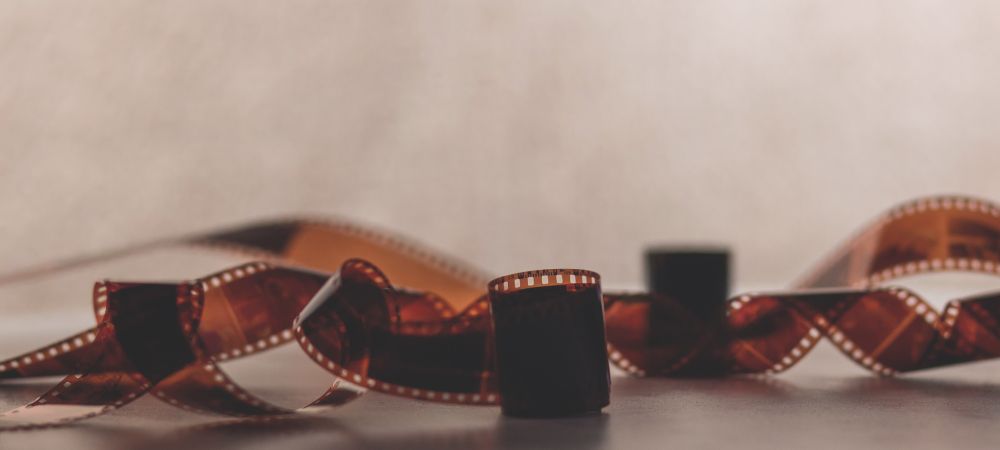

When it comes to developing films, there's a whole world of chemical solutions that come into play. added details available browse through here. These chemicals are like the unsung heroes behind those beautiful photographs we cherish. Let's dive into some of the types of chemical solutions used in this fascinating process, shall we?
First off, we have the developer solution. Oh boy, this one is crucial! It's responsible for turning the latent image on the film into a visible one. The developer works by reducing exposed silver halide crystals to metallic silver. Get the scoop see that. You'd think it's simple, but no way! Developers often contain agents like hydroquinone and metol which can be pretty finicky.
Next up is the stop bath. Now, if you're thinking "Stop bath? What's that?", you're not alone. It's actually an acid solution that halts the development process immediately by neutralizing the alkaline developer. Without it, your images would just keep developing until they were ruined - yikes! Most commonly, acetic acid is used for this purpose.
Then there's fixer – and trust me, you don't wanna skip this step! Fixer removes any remaining unexposed silver halide crystals from your film so that it becomes insensitive to light. Imagine going through all that trouble only to have your photos exposed again after you thought you were done? Nope, fixing is essential! Ammonium thiosulfate or sodium thiosulfate are typically used here.
Believe it or not, there's even more chemistry involved with washing and stabilizing solutions too. Washing helps remove any residual chemicals from your film ensuring longevity and stability over time – nobody wants their cherished memories fading away due to poor processing!
Finally let's not forget about wetting agents either; these help reduce water spots during drying by allowing water to flow off more evenly.
So yeah folks - there ya go! Developing film involves several key chemical solutions each playing its own vital role in creating those stunning final images we all love so much. It's definitely not as easy as just hitting 'print' on a digital file but oh man - isn't it worth it?!
The Role of Developer Solution and Its Components in Chemical Solutions and Their Uses
When it comes to chemical solutions, the role of a developer solution is not just important - it's crucial. A developer solution's primary job is to bring out the desired properties in other chemicals, often used in processes like film development or scientific experiments. You wouldn't believe how essential these mixtures are in various industries!
A developer solution consists of several components, each playing a unique part. Firstly, there's the solvent. This is usually water but can sometimes be alcohol or another liquid that helps dissolve other substances. Without a good solvent, you'd have nothing but clumps of undissolved material – definitely not what you want.
Obtain the scoop see below. Then there are the developing agents. These are chemicals that react with whatever you're trying to develop – say photographic film – and help reveal hidden images or details. They work by reducing exposed silver halide crystals to metallic silver in film processing, for example. It's kinda like magic when you think about it!
Don't forget about the preservatives! These chemicals prevent oxidation and degradation of the developing agents over time. If they weren't included, your developer solution would go bad pretty quickly, losing its effectiveness long before you've had a chance to use it all up.
Additives like buffers also play an essential role by maintaining the pH level of the solution. A stable pH ensures that reactions occur at a predictable rate and with consistent results. Imagine trying to bake a cake without keeping track of your oven temperature-chaos!
One might assume that stabilizers aren't as critical; however, they're vital too because they keep everything balanced during storage and usage.
So why do we care so much about these developer solutions? Well, their uses span across numerous fields-from photography (where they've been indispensable since daguerreotype days) to advanced scientific research where precision and accuracy are non-negotiable.
In conclusion-oops-I mean finally (we're avoiding repetition!), understanding how each component contributes makes us appreciate how meticulously crafted these solutions must be for them to function correctly. So next time someone mentions "developer solutions," remember all those tiny parts working together harmoniously!
The very first picture ever taken was by Joseph Nicéphore Niépce in 1826 or 1827, and it's called "View from the Window at Le Gras," requiring an eight-hour exposure.
High-speed photography can capture images at a millionth of a 2nd, usually made use of to photo fast-moving things like bullets in flight and droplets of liquid.
Astrophotography has actually allowed us to take photos that are so comprehensive, they can expose celestial objects numerous light years away.
In road digital photography, Henri Cartier-Bresson, a French professional photographer, created the term "The Decisive Moment," which captures the essence of spontaneity in settings of day-to-day life.
Ah, the age-old debate between film and digital photography.. It's a topic that has stirred up quite a bit of passion among photographers over the years.

Posted by on 2024-06-28
When you're diving into the world of analog photography, it’s crucial to choose a film stock that will make your learning experience as smooth and enjoyable as possible.. For beginners, this can be quite an overwhelming decision.

Posted by on 2024-06-28
Developing film at home can be a rewarding yet challenging experience.. It ain't as simple as pressing a button on your phone, that's for sure.

Posted by on 2024-06-28
In a world that's constantly rushing forward, there's something magical about capturing timeless beauty through the lens of film photography.. Finding inspiration in everyday moments isn't always easy, but it's definitely worth it.

Posted by on 2024-06-28
Preserving and Archiving Your Film Photographs
Oh, film photography!. There's just something so enchanting about capturing moments on film.

Posted by on 2024-06-28
Alright, so you're eager to learn how to transform your photos and discover the art of shooting with film?. Well, let me tell ya, it's not gonna be as easy as snapping a pic on your smartphone.

Posted by on 2024-06-28
Oh, the magic of photography! It's not just about capturing moments but also about the intricate dance of chemicals working together to produce those stunning images we all love. One crucial player in this process is the stop bath. Now, you might be wondering what a stop bath exactly does. Well, let me tell ya, it's like the unsung hero in the darkroom.
A stop bath basically halts the development process of a photograph. You see, when you're developing film or paper prints, they first go through a developer solution that makes the image appear. If you didn't do anything to stop this reaction, it would keep going until your photo turned into a black mess. Enter: Stop Bath! It's usually an acidic solution that neutralizes the developer and immediately stops any further chemical reactions.
Now, don't think for a minute that this step ain't important. Without it, you'd end up with overdeveloped photos-trust me on this one! The most common acid used in stop baths is acetic acid because it's effective and relatively safe to handle compared to stronger acids.
However, there are some folks who opt for plain water as an alternative stop bath, thinking it'll do just fine. But hey-let's not kid ourselves here-it doesn't work nearly as well as an acidic solution. Water might slow down development slightly but won't halt it completely like a proper stop bath would.
But why should we care so much about stopping development precisely? Well, consistency is key in photography if you're aiming for high-quality prints or negatives every time. By using a reliable stop bath, photographers ensure that their images look as intended without unexpected variations.
Another thing worth mentioning is odor control-yep! Some people don't realize how smelly these solutions can get. A commercial stop bath often contains indicators and buffering agents that help minimize unpleasant smells which plain ol' water can't manage.
So there you have it-a sneak peek into why the humble stop bath plays such a pivotal role in halting photographic development processes. It may not be glamorous or flashy but boy oh boy does it get its job done efficiently!
Remember folks: next time you're diving into some darkroom magic; give your trusty stop bath some credit-it deserves it!

Sure, here's an essay that fits your requirements:
---
Fixer Solution: Stabilizing the Image Permanently
In the world of photography and film development, there's a crucial step that can't be overlooked-fixing the image. Ah, you thought snapping a photo was all it took to capture a moment? Nope! Without a fixer solution, those images wouldn't stand a chance against time.
So what exactly is this magical potion? Well, let's break it down. A fixer solution is essentially a chemical concoction used in the final steps of developing photos and films. Its main job? To stabilize the image permanently. It's like giving your picture an eternal life pass-sounds dramatic, huh?
When you're developing film or paper prints, there's more going on than meets the eye. After exposing your material to light and running it through developer chemicals, you've only done half the work. The image is still pretty vulnerable at this stage; it's like walking on thin ice!
Now comes our hero-the fixer solution. This mixture usually contains sodium thiosulfate or ammonium thiosulfate (yeah, big words) which basically swoop in and save the day by removing any unreacted silver halides from the emulsion layer of photographic material. If these weren't removed? Oh boy, you'd end up with foggy pictures as they continue to react with light over time.
You might think fixing takes forever but surprise-it doesn't! Most fixer solutions work pretty fast-within minutes really. And once it's done its job? Voila! Your image is now stable and ready for viewing without fear of fading away into oblivion.
Don't get me wrong though; using a fixer isn't foolproof if you don't follow instructions carefully (who does anyway?). Leaving your print or film in the solution for too long can lead to other issues like bleaching out details or even damaging what could have been a fabulous shot.
There's also something rather fascinating about watching this whole process unfold right before your eyes-you know you're witnessing chemistry at work in such an artistic way! Isn't that amazing?
Anyway, I digress... So yeah folks-that's why we need fixers in our lives when dealing with traditional photo development processes-not only do they make sure our captured memories last but also ensure they look their absolute best while doing so!
In conclusion: no fixer means no permanence-and who wants temporary beauty anyway? It's just not worth it if ya ask me! So next time someone tells ya about how simple taking pictures used to be back then-you'll know better!
---
Hope you enjoyed reading that one-it gives quite an insight into how indispensable fixer solutions are while keeping things casual yet informative!
The Importance of Washing and Rinsing Chemicals from Film
Oh, the enchanting world of film photography! It's an art that's not just about capturing a moment but also about the meticulous process that follows. One essential aspect that often gets overlooked is the importance of washing and rinsing chemicals from film. You might think, "Why bother? It's just a bit of residue." But trust me, it ain't as simple as that.
Firstly, let's talk about why these chemicals need to be properly washed off. If you don't wash them thoroughly, they'll hang around on your film like unwanted guests at a party. These residual chemicals can cause all sorts of problems down the line-fading images, discoloration, even complete ruin of those precious shots you took so much effort to capture. It's kinda ironic, isn't it? The very same chemicals you use to develop your photos can end up destroying them if you're not careful.
Now, some folks might think rinsing is just an optional step. Oh boy, that's a big no-no! When you skip proper rinsing or do it half-heartedly, you're essentially leaving behind traces of fixer or developer on your negatives. This leftover muck can interact with light and air over time leading to degradation. Your photos will lose their charm faster than you'd imagine.
And hey, let's not forget water quality here either! Using dirty or contaminated water for washing can introduce new impurities onto your film which are equally bad news. So yeah, make sure the water you're using is clean and free from any contaminants.
People often ask if it's okay to rush through this part because they're excited to see their final product ASAP. Well folks – patience really is key here! Skipping steps or speeding through them won't save time in long run; you'll end up spending more fixing mistakes later (if they're even fixable). So take your time - give those films a good rinse!
In conclusion? Don't underestimate importance of washing and rinsing chemicals from film after development process! Neglect this step and you risk damaging what could've been timeless images worthy enough for gallery walls-or at least cherished family albums.
So next time when developing films remember: thorough rinsing isn't just recommended-it's absolutely crucial!
Specialty solutions for tonal adjustments and effects in the realm of chemical solutions aren't just fascinating; they're downright magical. You might think these solutions are restricted to industrial uses, but oh no, they seep into our daily lives more than we realize. They ain't just some fancy chemicals in a lab-they're part of the art we see and the music we hear.
Let's dive into photography first. Have you ever wondered how those black-and-white photos have such perfect shades of gray? It's not just about clicking the button on a camera. The magic (or should I say science?) happens in what's called a darkroom where specialty chemical solutions like developers and fixers come into play. Developers bring out the hidden images on film by converting exposed silver halide crystals into metallic silver, while fixers stabilize those images so they don't fade away with time. These chemicals are meticulously designed to ensure every tone from pitch black to dazzling white is captured beautifully.
But hold on, it's not only about photos! Specialty solutions also waltz their way into textiles, particularly when it comes to dyeing fabrics. Did ya know that mordants-specialty chemicals used in textile dyeing-help bind dyes to fibers? Without them, colors would be dull and lifeless or worse yet, they'd wash out after one laundry cycle. And who wants that?
Musicians too rely on these amazing concoctions for their instruments' upkeep and sound quality. Brass players use specific cleaning agents that remove tarnish without damaging delicate finishes or altering tonal qualities of their instruments. Guitarists often use specialized fretboard conditioners which keep wood hydrated while enhancing its natural resonance.
You'd think we've covered all bases but wait there's more! In filmmaking too specialty solutions make a splash albeit indirectly through digital means nowadays rather than traditional film processing methods still trusted by purists alike!
So next time you marvel at an old photograph or enjoy richly dyed fabric remember theres probably been some nifty chemistry behind scenes making sure everything looks perfect! Specialty solutions may be unsung heroes but hey let's give em credit where due right?
In conclusion specialty chemical solutions for tonal adjustments effects touch myriad aspects influencing aesthetics functionality across various fields far beyond surface level appearances truly integral parts creating maintaining desired outcomes whether visual auditory tactile experiences shaping perceptions everyday life subtly profoundly intertwined ways often unnoticed unappreciated till now maybe little less so after reading this essay hopefully!
Photographic chemicals, oh boy, they can be quite tricky to handle! When it comes to the safe handling and disposal of these chemical solutions, it's crucial not just for our health but also for the environment. You wouldn't want to mess that up, right? These chemicals ain't your average household cleaners; they're much more potent.
First off, let's talk about handling. You can't just pour them into any container you have lying around. It's essential-no, critical-to store photographic chemicals in their original containers or properly labeled ones. Ever thought about what might happen if you mix them up? Disaster! Always wear gloves and goggles when dealing with them since direct contact with skin or eyes can cause irritation or even burns. And no, a splash on your jeans isn't harmless either; some of these substances are strong enough to deteriorate fabric.
Ventilation is another thing folks often overlook. Working in a poorly ventilated space isn't just uncomfortable; it's downright dangerous. Those fumes can really get ya! Make sure you're in an area with good airflow or use a fume hood if possible.
Now onto disposal-oh dear, this part's often ignored but super important. Don't ever think you can dump photographic chemicals down the sink like some leftover coffee. Big no-no! Many of these solutions contain heavy metals and other pollutants that wastewater treatment plants aren't equipped to handle effectively. So what should you do? Most towns have hazardous waste collection sites where you can drop off old or unused chemicals safely.
There are specific steps for neutralizing some photographic chemicals before disposal too. For instance, fixer solutions typically contain silver ions which are harmful to aquatic life. You'd need to remove the silver using special recovery units before disposing the rest of the solution safely.
Surely you've heard about MSDS sheets (Material Safety Data Sheets)? No? Well, these documents provide detailed information on how to handle each chemical safely and what first aid measures should be taken in case something goes wrong. Keep 'em handy!
In essence, proper storage, cautious handling with protective gear, adequate ventilation, and environmentally responsible disposal methods are key elements that shouldn't be neglected when working with photographic chemicals.
So yeah-handling and disposing of photographic chemicals ain't rocket science but requires care and attention nonetheless. Better safe than sorry!